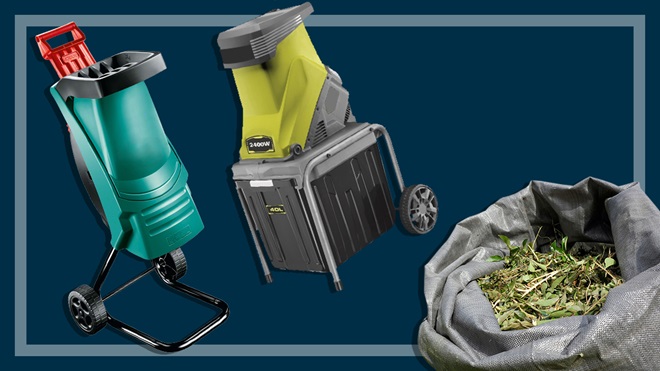Sick of trying to cram branches and leaves into the bin on green waste day? If your garden produces a lot of sticks and cuttings, as well as leafy material, a good shredder will quickly turn them into woodchips suitable for mulching garden beds or adding to compost.
That's good for your garden, good for the environment and – if you usually buy your mulching materials – could even save you money in the long run. Here's what you need to know before you invest in one.
On this page:
- Electric, cordless or petrol garden shredders: Which is best?
- How much do garden shredders cost?
- Features to look for in a garden shredder
- Blades vs rollers
We're on your side
For more than 60 years, we've been making a difference for Australian consumers. In that time, we've never taken ads or sponsorship.
Instead we're funded by members who value expert reviews and independent product testing.
With no self-interest behind our advice, you don't just buy smarter, you get the answers that you need.
You know without hesitation what's safe for you and your family.
And you'll never be alone when something goes wrong or a business treats you unfairly.
Learn more about CHOICE membership today
Electric, cordless or petrol garden shredders: Which is best?
Electric (corded) shredders
Electric shredders generally cost under $800 and can handle branches up to about 4cm in thickness. You'll have to think about the distance from a power point to where you want to shred, and you'll likely need an extension cord designed for outdoor use. Be sure to minimise the risk of shock if the cord is damaged by plugging it into a point with a safety switch.
Cordless (battery) shredders
These generally use a battery system compatible with other tools from the same brand. That can make them an attractive option when you already own a few other such cordless tools, and not needing a power cord can be handy if you need to move the shredder from place to place. They're otherwise similar to corded electric models.
We tested one cordless model and found it was a very good performer. It had more than enough running time to handle our test, though if you need to shred huge amounts of material in one session, you might need to pause to recharge the battery, or keep a second battery on hand. Batteries will wear out eventually (though this can take years) and need replacing.
Petrol shredders
If you're looking for some heavy-duty shredding more than 4cm in thickness, a petrol engine might be the machine for you. These are usually priced between $1000 and $2000 but can shred thicker branches – up to 5–6cm. And because they don't need access to electrical power, they're better suited to use in areas remote from the house. You'll have to store petrol, and the petrol engine will require regular maintenance.
As petrol models are generally intended for heavy-duty use, we don't usually include them in our reviews. We focus on electric and cordless models as they're generally the best fit for most households.
Be aware that shredders shoot out debris and can also be very noisy. Wear eye and ear protection, gloves, sturdy shoes, and long trousers – and keep kids and pets well away.
How much do garden shredders cost?
The corded electric and cordless garden shredders in our most recent test range in price from $199 up to almost $1000. But our testing shows that price isn't always an indicator of quality – many cheaper models outperformed their more expensive counterparts when it came to shredding freshly cut and dry material, so it pays to do your research before you buy.
Petrol garden shredders tend to be more expensive generally, and you can expect to pay at least $1000 for one.
Features to look for in a garden shredder
Ease of use
When shopping for a shredder, if you can, test how easy it is to manoeuvre and lift. A heavy or clunky model may be hard to use in rough terrain or over distance. Also check how easy it is to access the blades for adjustment.
Plunger
This is basically a small paddle with a handle used to push the material into the shredder. It's usually long enough to be useful at pushing material into the blades, but too short to actually contact the blades. A plunger helps to avoid a nasty injury to your fingers.
If your shredder doesn't come with a plunger, you can also use a sturdy stick, though be cautious of getting it caught by the blades or rollers and being wrenched from your hand.
Collection bag
If your machine doesn't come with a collection bag or bin, a sturdy garbage bag will often work just as well.
Reverse function
A switch to reverse the direction of the blades or rollers to help clear any jammed material. Some models have an automatic reverse that engages when the machine detects a blockage. For safety (both yours and the shredder's), follow manufacturer instructions carefully when using this function.
Branch thickness
When investigating different shredder models, consider the maximum branch thickness you're likely to be shredding, and make sure the shredder can handle that size. The corded electric cordless shredders we've tested can all handle branches up to 35mm thick (and some can even handle more than this).
Blades vs rollers
There are two main cutting systems used in garden shredders. Some use blades to cut the material into small chips, and others use a ridged roller that crushes and cuts the material. Blades are generally considered to be more effective than rollers for shredding freshly cut or leafy material.
If you mainly have leaves in your garden and rarely deal with branches, a blower vac with a built-in mulcher might suit you better.
Stock images: Getty, unless otherwise stated.



